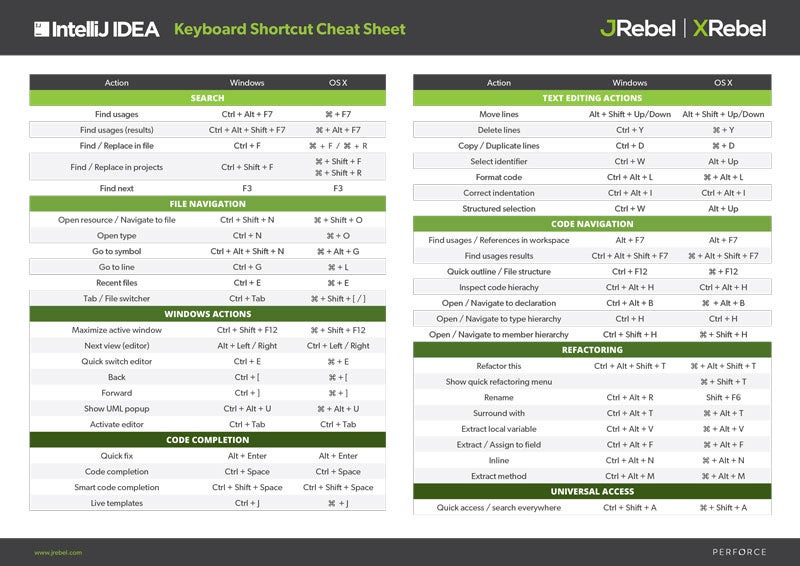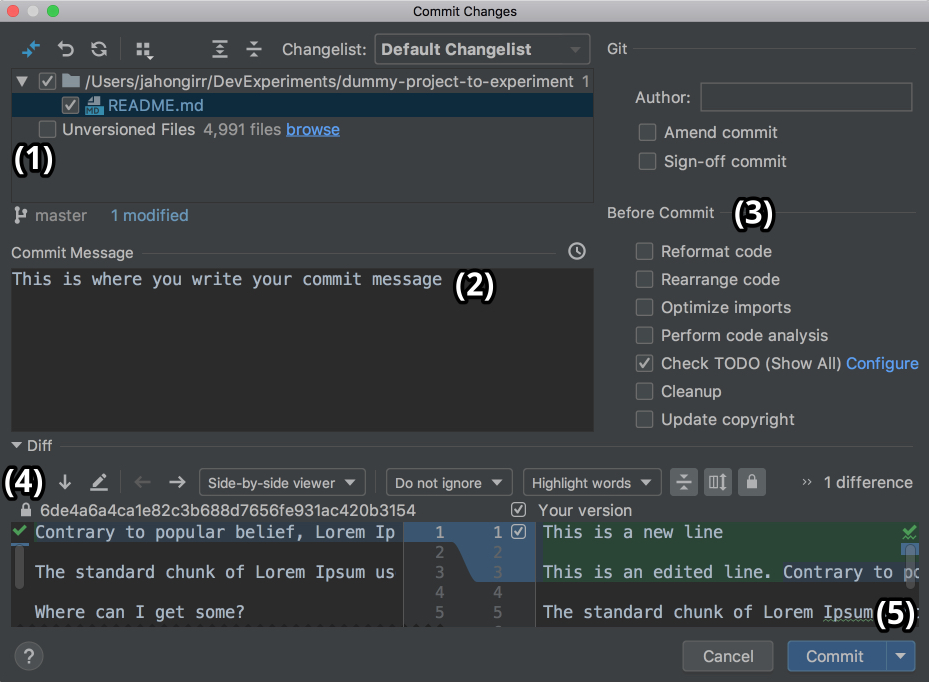- PyCharm 14 Shortcuts are the combinations of keys being used to perform a set of activities. You can find the list of PyCharm shortcuts in Keymaps guide reference. Finding Shortcut The list of shortcuts is available in the following option Help - Find Action menu where it pops up with a shortcut window. PyCharm – Shortcuts.
- The -icon shows at first glance which shortcuts are already in your collections. Hover over the icon to see the names of your collections that contain the respective shortcut. These public tables can also serve as a cheat sheet to quickly look up keyboard shortcuts when you need them.
- PyCharm Mac cheat sheet of all shortcuts and commands.
Hey Finxters! We all need cheat sheets for Python and all its intricacies. Python has many libraries and there are so many IDE applications you can use with it! One of these IDEs is called Pycharm! I want to introduce you to some of Pycharms shortcuts! Let’s get started right away!
If any of the default shortcuts is not. Keymap Reference comes in a form of PDF document that you can print and use as a cheat sheet to quickly look up most. Product @PyCharm. Extensive wiki-style reference database for Shortcuts, Hotkeys, Cheatsheets. Export Shortcut Pages as PDF or Spreadsheet.
Full PyCharm Tutorial Finxter
The Finxter tutorial contains a multi-site PyCharm introduction with video courses.
Cheat Sheet 1: JetBrains
This cheat sheet is one you will want to save in your bookmarks! It will show you all the shortcuts you need to get Pycharm working for you! JetBrains is the place to go if you want to learn PyCharm and Python!
Pros: Rated ‘E’ for everyone. Honestly! This is a great place to start!
Cons: Can’t be printed, but honestly worth bookmarking.
Cheat Sheet 2: Cheatography
This is a cheat sheet that you can print and pin to the wall for Pycharm! This cheat sheet follows the 80/20 rule we love at Finxter! You’ll be able to learn Pycharms shortcuts quickly with this cheat sheet up on the wall.
Pros: Follows the 80/20 rule!
Cons: None that I can see.
Cheat Sheet 3: TutorialsPoint
This cheat sheet will guide you through Pycharm. From installation to Django. You will learn everything that you need to learn including shortcuts, writing HTML and CSS integration and Javascript support. Read all of it in one go or read the section that you need when you need it. You can either bookmark the pdf page or print it to save in your developers binder to keep on hand when you’re working.
Pros: Perfect for introducing and going in depth with Pycharm
Cons: None that I can see.
Cheat Sheet 4: ShortcutFoo
ShortcutFoo has a list of shortcuts made for Pycharm on debugging and editing, navigation and refactoring. You should bookmark this page and keep it handy online when you work in Pycharm.
Pros: ShortcutFoo will show how to work with these shortcuts and train you in them.
Cons: None that I can see.
Cheat Sheet 5: RealPython
This is more an online guide than a cheat sheet that you can learn Pycharm from. You can build, debug, edit, and test. This guide even dives deeper into the database support and scientific mode.
Pros: Deep dives into Pycharm includes a professional module
Cons: Not an actual cheat sheet to download.

Cheat Sheet 6: ShortCut World
Another quick sheet for you to learn shortcuts from when you’re using Pycharm! This is presented by JetBrains! I would suggest bookmarking for your developers binder when you are working in Pycharm.
Pros: Quick guide into shortcuts
Cons: Does not download as a pdf
Cheat Sheet 7: pngkey
Here is another cheat sheet that you will be able to print after downloading it. It will give you all the shorthand you can use on your keyboard for Pycharm.
Pros: Great for pinning to the wall or in the Developers journal
Cons: None that I can see.
Cheat Sheet 8: AugmentedMinds
This cheat sheet is presented by Augmented Minds and is combined with an article that will help boost productivity in developing software in Pycharm
Pros: This cheat sheet is presented with an article.
Cons: None that I can see.
Cheat Sheet 9: AWS
This is another tutorial presented by Amazon through its AWS. It will go over the development endpoint in Pycharm.
Pros: Shows you how to Pycharm Professionally
Cons: Is not a cheat sheet that can be printed.
Cheat Sheet 10: Edureka
This is the final tutorial instead of a cheat sheet for you to learn Pycharm and all of the shortcuts there at the bottom of the tutorial. This tutorial will help you download Pycharm and teach you important tools and features.
Pros: It will go over Python and Pycharm.
Cons: None that I can see.
Python and Pycharm are very powerful when used together. These cheat sheet and tutorials, I hope will help you in learning Pycharm, its shortcuts, and master it! With that being said I want to leave you with a pdf book from this github repository link posted below. It will help you master pycharm! Keep Pythoning and Keep on developing!!
Bonus Resource
Related Articles:
Related Posts
Tips & TricksPycharm Keymap
Learning something new is not only about getting new knowledge or mastering new skills – it is also about building new habits and getting the most joy out of something. That’s why with this blog post we wanted to start a series of posts covering learning methods and tips and tricks designed to help you to learn more effectively and make you more comfortable and excited with learning Python in PyCharm Edu. It may also help set up productivity habits that will be quite useful for further professional Python development with PyCharm. So, let’s start!
While coding, as well as learning how to code, it is very important to feel comfortable. The development environment should suit your needs and preferences and help you to stay focused and avoid distraction. You can use the default settings but the option is there for you to easily configure your environment in a way that makes sense to you if you want to.
Use keyboard shortcuts
Go to the dark side
Stay focused with a minimalistic UI
Find any action with ease
Use keyboard shortcuts
We encourage you to use keyboard shortcuts, as they can significantly speed up your coding and even reduce the risks of Repetitive Strain Injury. PyCharm Edu is a keyboard-centric IDE. You can choose one of the preconfigured shortcut schemes, or keymap, in Preferences | Keymap:

You can always take a closer look at the list of actions and corresponding shortcuts with the help of search:
Or, you can search an action by shortcut:
You can also set up your own keymap if you need a customizable list of shortcuts.

Please note, that we use default Mac OS scheme (Mac OS X 10.5+) in this blog post. If you use the default keymap of your OS and want to have a nice looking cheat sheet to print out, go to Help | Keymap Reference to get it.
Go to the dark side
PyCharm Edu initially uses the default light color scheme, but you can always switch to the dark Darcula scheme. Please go to Preferences | Appearance & Behavior | Appearance and choose Darcula as Theme under UI Options section:
Or you can use the Ctrl + Backquote(`) shortcut:

Stay focused with a minimalistic UI
When you open your course in PyCharm Edu, you can see the main tool windows that help you get around: Project View, Editor, Task Description:
But after a couple of lessons, you may want to minimize the UI and focus only on the tasks you’re going through.
Step 1: Manage tool windows
First of all, let’s hide the Project View window by clicking on the Project tool button, or with Cmd + 1 shortcut. That will give us more space for code and the task description:
We can also hide all tool buttons with the tiny screen icon at the bottom left of the window:
To open any tool window whenever it is needed, just use the same icon:
or, invoke View | Recent Files (Cmd + E) command:
Now we have a more clear UI:
Step 2: Set up the task description panel
Task description needs to be visible, to hide it completely is not advised. But still, we can make it a bit less distractive by moving it around.
If you work with two monitors, one of the best options is to switch the task description panel to a floating mode and move it to another monitor or just place it near the main IDE window. You can do so with the help of special tool window settings icon:
Or if you prefer you can move the panel to the left, or to the bottom:
So the IDE looks like this:
Step 3: Switch to editor any time you want
While learning you will write new code, run it, then go back to task description, etc. So even if you’ve started with a very minimalistic UI, at some point you will need to return to that kind of view:
If you want to easily go back to the editor and focus on your code, the Hide All Windows command (Shift + Cmd + F12) is the best option:
Just invoke it once again to show all the windows back.
Pycharm Shortcuts Cheat Sheet Pdf Mac
Find any action with ease
I’ve started this post with an exhortation to use shortcuts. And I want to finish up with my favorite feature, to thank everyone who has reached this section 🙂
It is very hard to remember all the shortcuts and all the actions and productivity boosters PyCharm Edu has. But don’t worry about that. All you need to remember is just one action that rules them all, Help | Find Action command (Shift+Cmd+A). Just start typing the action you need, and get the list:
And even more, you can change your preferences just from this list. Find an option you want to change and press Enter:
Pycharm Pdf
There you go. Let us know how you like these features! Stay tuned to not miss the next portion of tips & tricks for more efficient learning. Share your feedback here in the comments or report your findings on YouTrack, to help us improve PyCharm Edu.
Pycharm Shortcuts Cheat Sheet Download
—
Your PyCharm Edu Team
